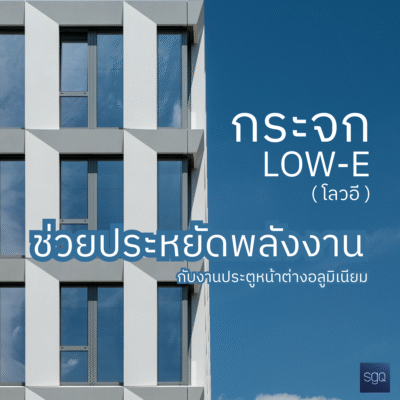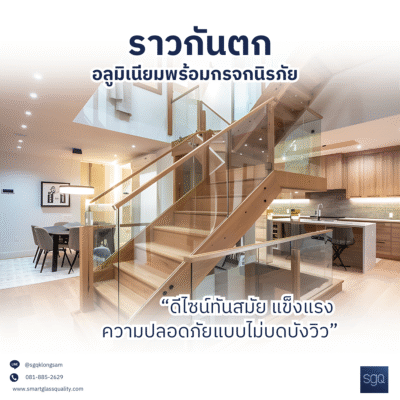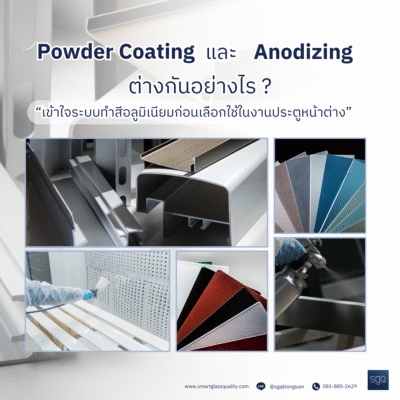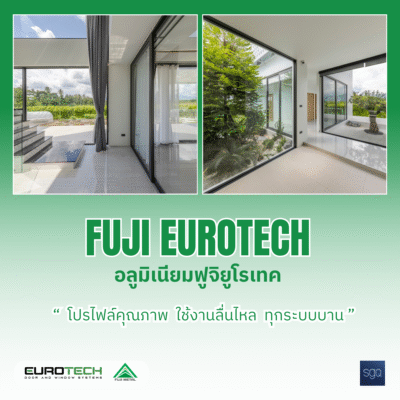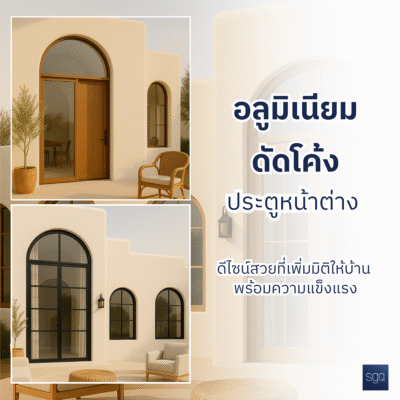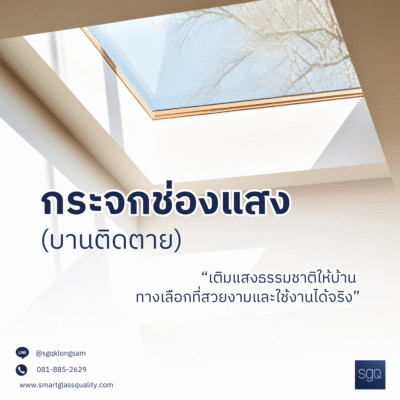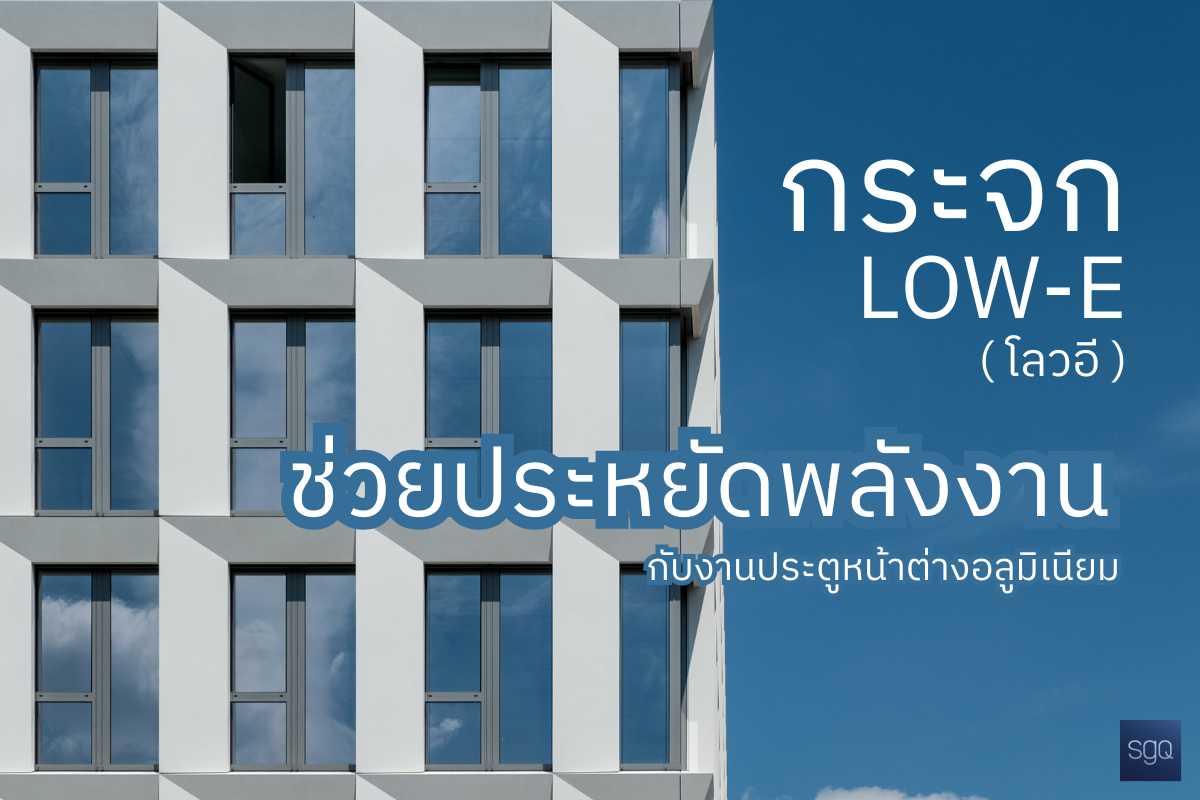
Selecting building materials that help minimize energy loss has become increasingly important for homeowners and architects, especially for doors and windows, which are the main points of heat and cold transfer between indoors and outdoors. Choosing the right materials plays a crucial role in maintaining a comfortable indoor temperature and reducing the workload of air conditioning systems.
One of the most effective solutions is Low-E glass, designed to reduce heat transfer without compromising natural light. It helps save energy while improving living comfort. When paired with high-quality aluminum frames—whether sliding doors, casement windows, or fixed panels—Low-E glass enhances durability and aesthetics, making it ideal for modern homes and buildings seeking both style and long-term value.
Low-E Glass for Energy-Saving Homes: The Perfect Match with Aluminum Frames
Low-E glass, short for Low Emissivity Glass, is a special type of glass coated with a thin metallic layer. This coating helps control heat transfer between the inside and outside of a building by reflecting infrared (heat) and ultraviolet (UV) rays while still allowing plenty of natural light to enter.
The working principle of Low-E glass is simple: when sunlight carrying heat and UV rays strikes the glass, the coating reflects the heat outward and reduces radiation entering inside. This keeps homes cooler in summer and retains warmth during colder months. As a result, air conditioners and heating systems work less, leading to significant energy savings.
Additionally, Low-E glass blocks UV rays that cause furniture, wooden floors, and curtains to fade prematurely. This means it not only saves energy but also extends the lifespan of your interior furnishings.
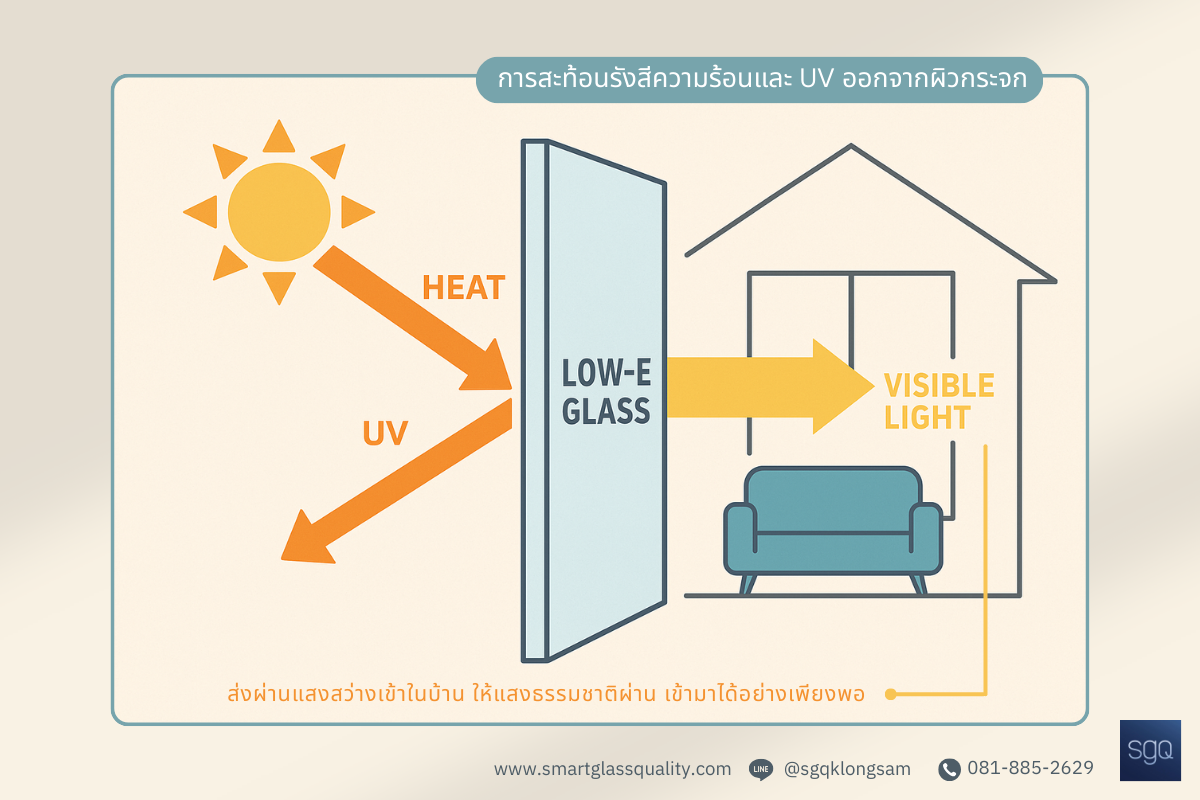
Properties of Low-E Glass
Low-E glass is designed to improve energy efficiency in residential and commercial buildings. Its key properties include:
-
Reduces Heat Transfer from Outside
The thin metallic coating on the glass surface reflects infrared rays, reducing heat transfer into the building. This lowers the cooling load on air conditioning systems during hot seasons.
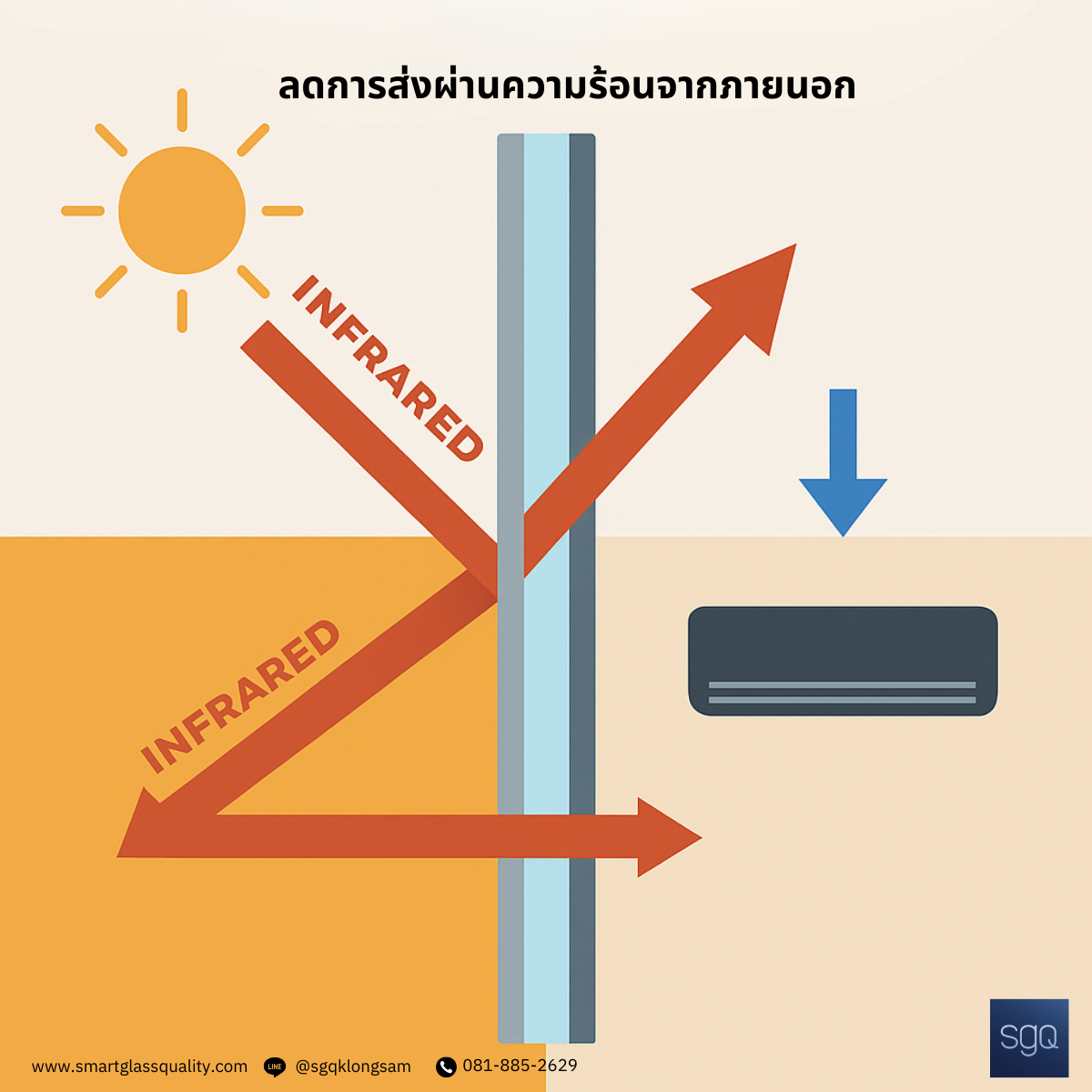
- Maintains Indoor Temperature
Besides keeping interiors cool in summer, Low-E glass also retains indoor warmth during winter, minimizing heat loss from heating systems.
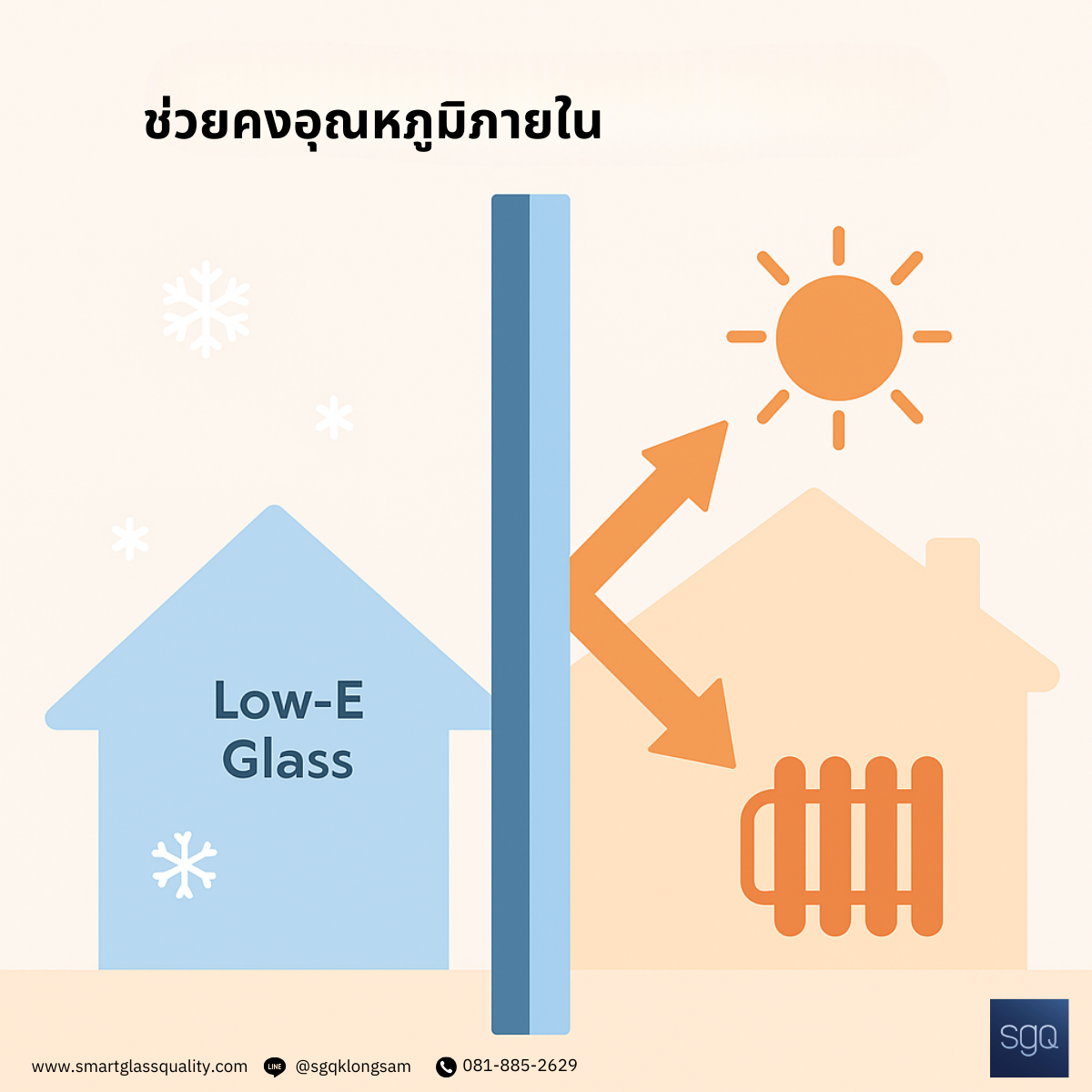
- Reduces Glare while Preserving Natural Light
It filters UV rays and excessive brightness that cause glare, while still allowing sufficient natural daylight to illuminate the interior.
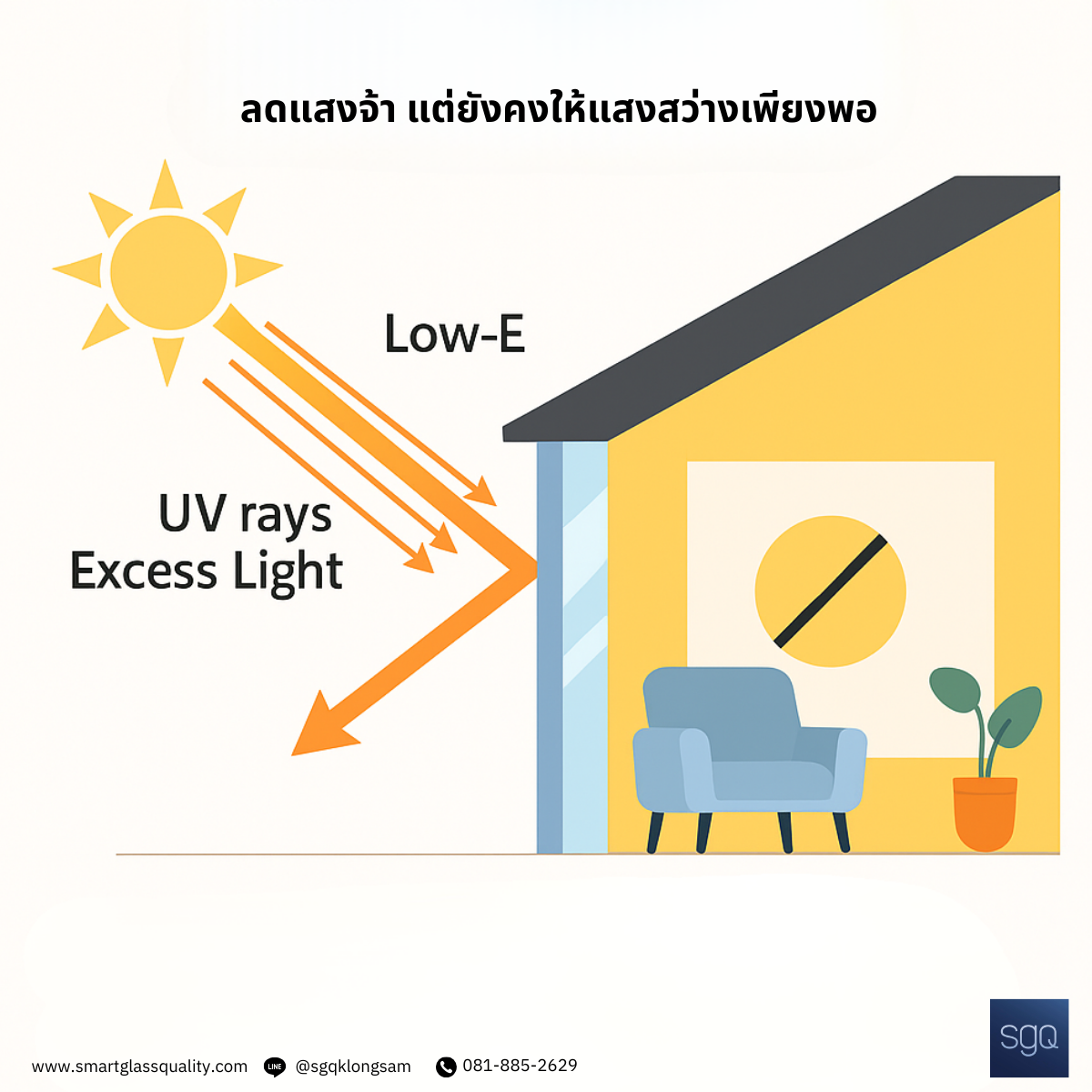
- Reduces Glare while Preserving Natural Light
It filters UV rays and excessive brightness that cause glare, while still allowing sufficient natural daylight to illuminate the interior.
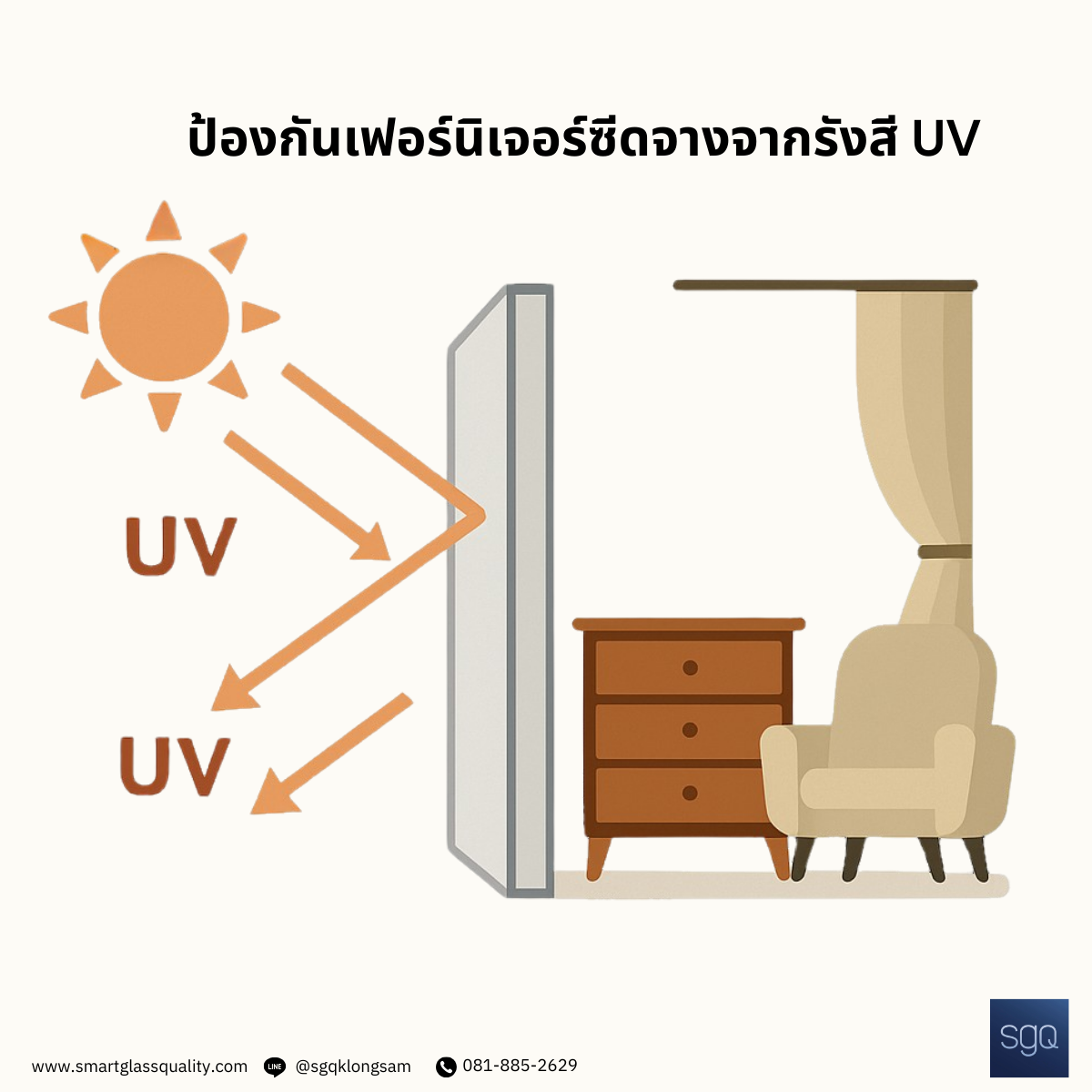
Advantages of Low-E Glass
- Energy Saving Lowers electricity consumption from air conditioners and heating systems.
- Improved Comfort Maintains a stable indoor temperature, avoiding excessive heat or cold.
- Protection for Furnishings Minimizes fading of furniture and décor caused by UV rays.
- Soft Natural Lighting Provides gentle daylight while reducing glare and harsh reflections.
Disadvantages of Low-E Glass
- Higher Cost More expensive than standard glass due to its specialized coating process.
- Requires Proper Installation To achieve maximum performance, it should be installed by skilled professionals with high-quality aluminum frames.
- Slight Color Difference The metallic coating may give the glass a subtle tint or reflective tone compared to regular clear glass.
Low-E Glass with Aluminum Doors and Windows
Choosing glass for doors and windows is not only about aesthetics but also about functionality and energy efficiency. Low-E glass pairs perfectly with high-quality aluminum frames, as aluminum is strong, lightweight, rust-free, and can be designed to support various glass sizes without compromising durability.
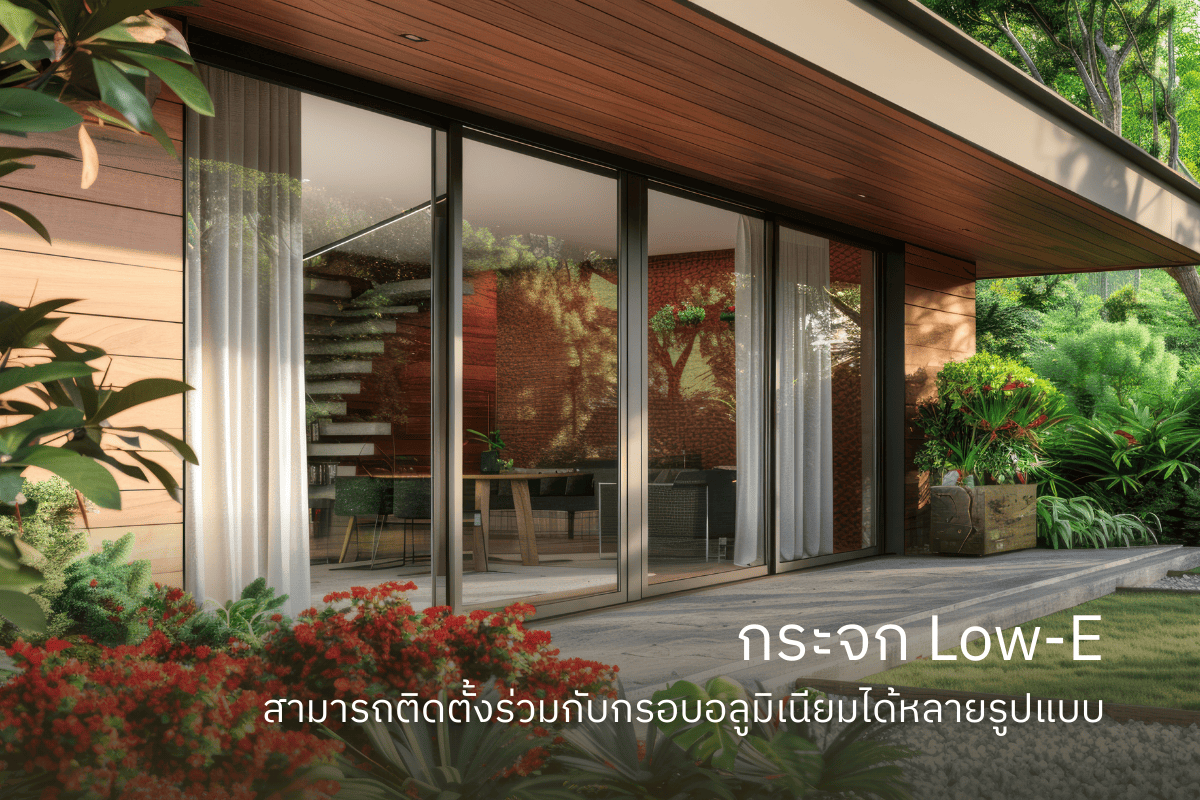
Why Aluminum Frames Are Ideal for Low-E Glass
- Strong Structure Can support heavy or multi-layered glass effectively.
- Slim Profile Design Maximizes glass area, allowing more natural light inside.
- Durable and Stable Resistant to warping or deterioration, ensuring the long-term performance of Low-E glass.
Versatile Applications
Low-E glass can be installed with aluminum frames in various designs, such as:
- Sliding Door/Window Ideal for saving space in opening and closing.
- Awning Window Allows ventilation even during rain.
- Casement Door/Window Opens wide for maximum airflow.
- Fixed Window Perfect for large openings and expansive views.
Ideal for Energy-Efficient Homes and Buildings
The combination of Low-E glass and aluminum doors/windows reduces cooling loss from air conditioning while blocking external heat. This makes homes and buildings more energy-efficient—ideal for eco-friendly houses, offices, or condominiums that value both design and performance.
Installation for Maximum Performance
For optimal performance, Low-E glass should be installed by experienced professionals using premium aluminum systems such as ORM, Schimmer, or Fuji Metal. These systems ensure tight sealing to prevent air and water leakage, complemented by standard accessories for maximum durability.
Energy Savings and Benefits
One of the key reasons Low-E glass has gained widespread popularity is its proven ability to save energy. By reducing heat transfer and maintaining indoor temperatures, it eases the workload of cooling and heating systems, directly lowering long-term energy costs.
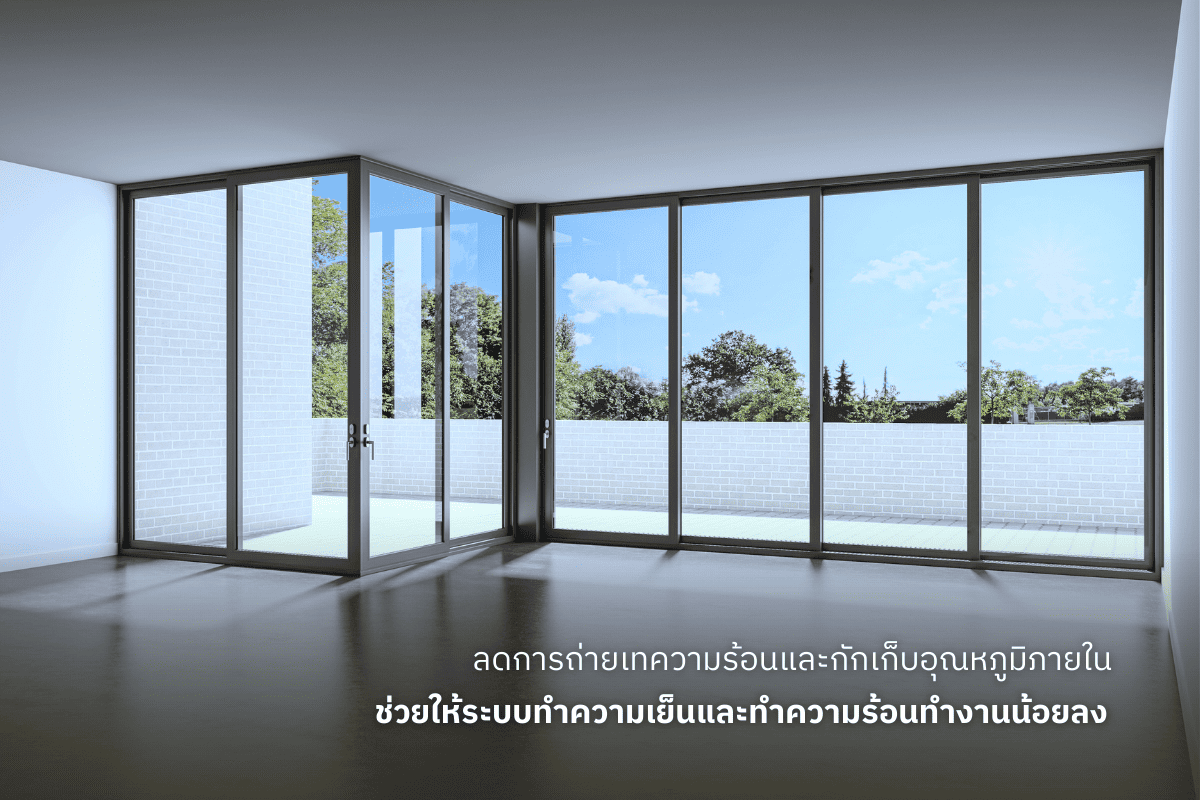
- Reduces the Workload of Air Conditioners and Heaters
When glass effectively blocks external heat and preserves indoor temperature, air conditioners in summer and heaters in winter operate less frequently. This not only extends the lifespan of these appliances but also reduces maintenance costs. - Long-Term Electricity Savings
Although Low-E glass is more expensive upfront than regular glass, the long-term savings on electricity bills make it a cost-effective investment—especially for homes and buildings with large glass areas exposed to direct sunlight. - Comparing Temperature and Energy Bills Before and After Installation
Real-world data shows that buildings with Low-E glass maintain lower indoor temperatures by several degrees compared to those with standard clear glass, resulting in significantly reduced energy consumption for air conditioning.
With these benefits, Low-E glass is not just an aesthetic choice—it’s a long-term investment in energy efficiency and comfort, making it ideal for both residential and commercial buildings aiming to reduce costs and enhance livability.
How to Choose the Right Low-E Glass for Your Home/Building
While Low-E glass offers excellent energy-saving properties, choosing the right specifications for your building and usage is equally important. To maximize both performance and value, consider the following factors:
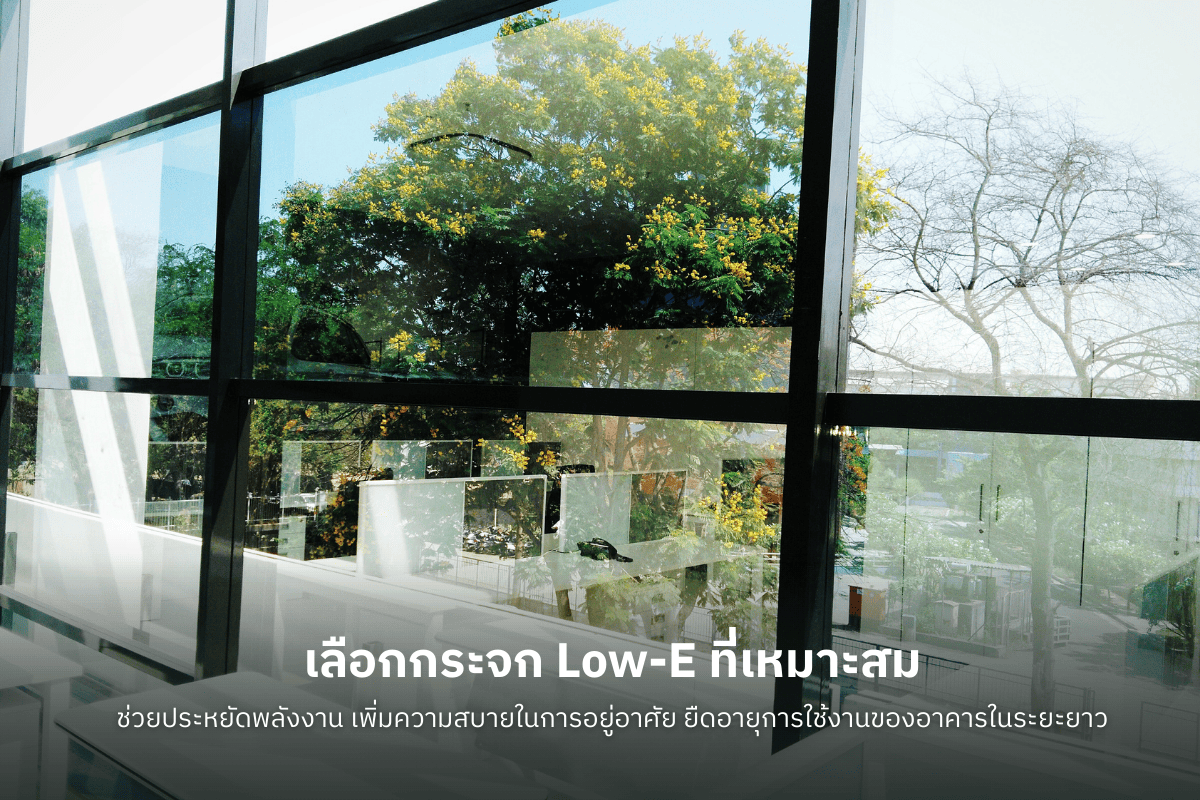
- Check Heat Reflection Values (U-Value and SHGC)
U-Value measures heat transfer. The lower the value, the better the glass insulates.
SHGC (Solar Heat Gain Coefficient) indicates how much solar heat passes through the glass. Lower values block more heat, making them ideal for areas with intense sunlight.
Both values should be selected according to the climate and the building’s orientation.
- Choose the Right Glass Thickness Thicker glass provides greater strength and heat resistance but requires frames that can support the added weight.
- Consider the Orientation of Windows and Doors
- South and West-facing windows/doors usually get the strongest sunlight and benefit from Low-E glass with a low SHGC.
- North and East-facing sides may use glass that allows more light to enhance brightness without excessive heat gain.
- South and West-facing windows/doors usually get the strongest sunlight and benefit from Low-E glass with a low SHGC.
- Combine with Tempered or Insulated Glass Installing Low-E glass as tempered glass or as part of an insulated glass unit (IGU) with an air gap boosts thermal performance, safety, and impact resistance—making it ideal for homes and buildings requiring higher safety standards.
The right Low-E glass not only saves energy but also enhances living comfort and prolongs the lifespan of the building.
One-Time Investment, Long-Term Energy Savings
Installing Low-E glass is a worthwhile investment that pays off in both energy savings and enhanced comfort. Its ability to block external heat, maintain stable indoor temperatures, and reduce the load on cooling and heating systems results in significant long-term electricity savings.
When combined with premium aluminum doors and windows—sliding, casement, or awning types—Low-E glass maximizes heat insulation and durability. It is the perfect choice for modern homes and commercial buildings that value energy efficiency and contemporary design.
SGQ Khlong Sam offers aluminum, glass, and hardware supplies with professional advice. Our expert team can help you choose the right Low-E glass specifications and aluminum systems for your home or building. Contact us today for more details!
For more inquiries, contact SgQ Khlong Sam at :
For installation services, please call : 099-392-1963 (Khun Kan) , 097-936-1449
Buy aluminum and equipment. Call: 0993921963 (Khun Tai)

